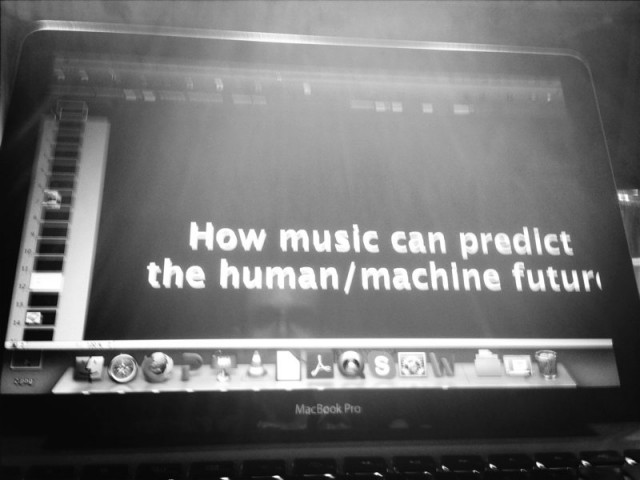This week, at Germany’s re:publica conference – an event linking offline and online worlds – I addressed the question of how musical inventions can help predict the way we use tools. I started all the way back tens of thousands of years ago with the first known (likely) musical instrument. From there, I looked at how the requirements of musical interfaces – in time and usability – can inform all kinds of design problems.
And I also suggested that musicians don’t lag in innovation as much as people might expect.
I thought about whether I wanted to post this as a video, as it’d be more structured if I wrote it as an article. But it occurs that some people might like to hear me talk off the cuff, “ums” and all, and those who did could provide some feedback. I really never give the same talk twice; I’m constantly revising my thoughts and part of the reason is being challenged by feedback. (Yes, as blogging may seem a solo monologue, in my experience it’s more like a feedback loop, not an echo chamber. Otherwise, I wouldn’t keep doing it.)
Full description:
http://13.re-publica.de/sessions/how-music-can-predict-humanmachine-future
From HAL to Wiimotes and Kinect, musicians have predicted the future of machine/human interaction. Because music connects with time, body, and emotion in a unique way, they test the limits of technology. Now it’s time to work out what comes next.
What’s going on here – how did musicians manage to invent major digital interaction tech before anyone else? Before the iPad, the first commercial multi-touch product was built for musicians and DJs. Before the Wii remote, musicians built gestural controllers, dating back to the early part of the 20th century. Before the moon landing, Max Mathews’ team of researchers taught computers to make music and sing, inspired HAL in 2001: A Space Odyssey, and may have even built the precursor to object-oriented programming. Music’s demands – to be expressive, real-time, and play with others – can test the limitations of technology in a way people feel deeply, and help us get beyond those limitations. Music technologist Peter Kirn will explore the history of these connections, show how those without any background in music can learn from this field, and examine how musicians may be at the forefront again, as they push the boundaries of 3D-printing, data mining, online interaction, embedded hardware, and even futuristic, cyborg-like wearable technology. Even if you can’t hold a tune, you may get a sense of how to get ahead of those trends – before HAL gets there first.
